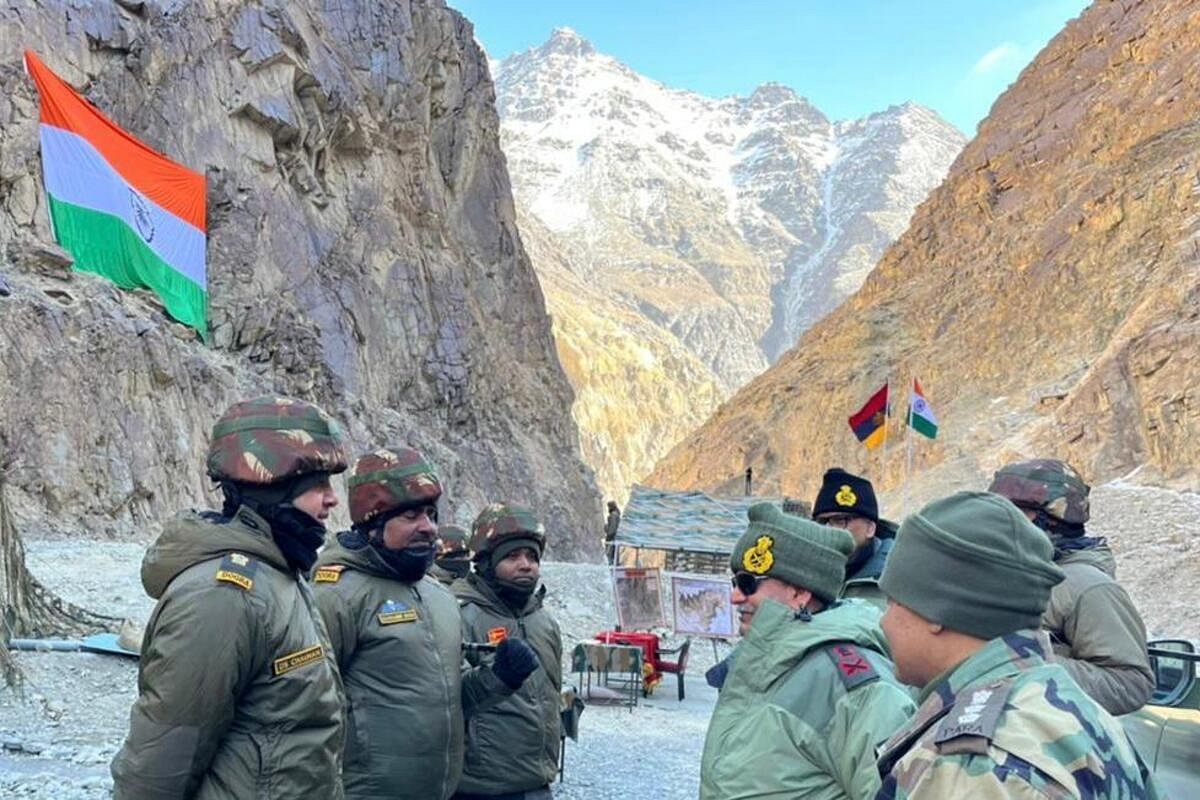Newsletters
Two Years Since Galwan Valley Clashes

Northern Army Commander in Galwan. (Northern Command/Twitter)
It has been a year since Galwan clashes!
On this day in 2020 soldiers from 16 Bihar Regiment clashed with Chinese troops.
Indian troops inflicted over 35 casualities on the Chinese side.
20 Indian soldiers were killed in action.
While India openly acknowledged and honored its dead the Chinese are yet to fully recognise their dead.
US: Chinese government probably had planned the incident
Satellite images showed that the Chinese side had built up large force levels, 'potentially 1,000 PLA soldiers' the week before the clashes.
A US Congressional Commission report said that the Chinese side had planned the incident including possibility of fatalities.
It said a proximate cause was India's construction of a strategic access road to support troops stationed along the LAC.
China has also built extensive infrastructure along the LAC in recent years.
In the aftermath of the clash, Beijing asserted sovereignty over the entire Galwan Valley, a new claim and significant change to the territorial status quo
But why Galwan Valley?
It's all about India getting its act right on the border infrastructure. In fact it is about one road in particular.
The Galwan Valley provides strategic depth in the region through which India has built a key road.
The Darbuk-Shyok-Daulat Beg Oldi (DS-DBO) road provides all weather connectivity for the army with far flung, vulnerable areas such as sub-sector north (north eastern Ladakh).
Immediate cause of stand-off: A feeder road and a bridge that India is constructing to Patrol Point 14 in the narrow Galwan Valley
The Kailash range offensive
In August following the clashed Indian Army commandos from Special Frontier Force captured heights of the Kailash Range south of Pangong Tso.
India’s move preempted China, which was also planning a similar action to grab the heights south of Pangong Tso.
This action gave India control of the strategically-important Spanggur Gap, which China could use for an armoured thrust into the Chushul Bowl and further towards Leh.
It also leaves Chinese camps and lines of communication around the Spanggur Gap vulnerable to Indian attack from the dominating heights.
Disengagement and aftermath
Indian and Chinese forces deployed on the north bank of the Pangong Lake and the peaks of the Kailash Range have disengaged.
But the standoff continues in other areas.
On both sides of the LAC, forces are now deeply entrenched.
New infrastructure has come up to sustain the unprecedented deployment of troops and equipment.
Last year, the PLA brought in 10,000 additional temporary troops to support the 10,000 permanent troops deployed in the region.
India continues to maintain the troop levels — 50,000 to 60,000 soldiers — that it had in Ladakh at the height of the crisis.
The LAC has been heavily militarised on both the sides.
Our heroes
The Indian Army has built a memorial to honor the soldiers who lost their lives in the Galwan Valley clash with China.
This is for the first time in nearly 45 years that Indian soldiers have been killed at the Line of Actual Control with China.
Col Santosh Babu, Maha Vir Chakra (Posthumous)
Colonel Santosh Babu, the Commanding Officer of 16 Bihar who was killed in action along with 19 others in the Galwan clash was decorated with a posthumous Maha Vir Chakra.
Captain Soiba Maningba Rangnamei, who was seen confronting Chinese troops in a video from the clash site received a mention in dispatches.
One 📸 - One Story
The Chinese continue to claim that only four of their troops were killed in the clashes.
News reports say at-least 35 Chinese troops were killed with pictures of their grave sites going viral.
Support Swarajya's 50 Ground Reports Project & Sponsor A Story
Every general election Swarajya does a 50 ground reports project.
Aimed only at serious readers and those who appreciate the nuances of political undercurrents, the project provides a sense of India's electoral landscape. As you know, these reports are produced after considerable investment of travel, time and effort on the ground.
This time too we've kicked off the project in style and have covered over 30 constituencies already. If you're someone who appreciates such work and have enjoyed our coverage please consider sponsoring a ground report for just Rs 2999 to Rs 19,999 - it goes a long way in helping us produce more quality reportage.
You can also back this project by becoming a subscriber for as little as Rs 999 - so do click on this links and choose a plan that suits you and back us.
Click below to contribute.
Latest